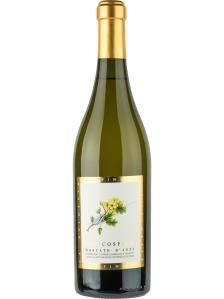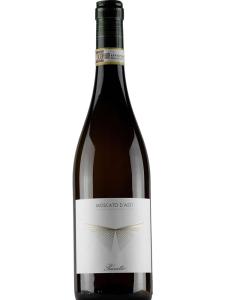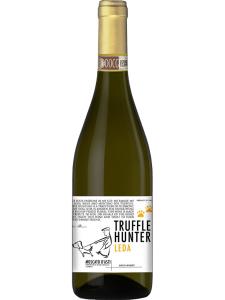Moscato d'Asti is a semi-sweet, lightly sparkling, low-alcohol wine from Piedmont, northwestern Italy. It could hardly be more different from Piedmont's other iconic wine style – robust, red, Barolo. As implied by its name, the wine is made from Moscato grapes grown in vineyards near the town of Asti. The classic Moscato d'Asti wine is characterized by elegant floral aromas and notes of peach, apricot and fresh grape juice (© Wine-Searcher). It is one of Italy's most famous and most popular wines. The wine's best-known producers include Castello del Poggio, Michele Chiarlo, Villa Rinaldi and Paolo Saracco. Even California-based Cupcake Vineyards now produces a Moscato d'Asti.
The Moscato Bianco grape variety has been at home in Piedmont for centuries. The variety was officially recorded as far back as the 13th Century, in the statues of the town of Canelli. Canelli remains important to Moscato today; it is located at the very heart of the Moscato d'Asti production area and is home to several wineries of note. The Moscato Bianco variety is even sometimes known by the synonym Moscato di Canelli.
Moscato (often known by its French title, Muscat Blanc à Petits Grains) is used all around the Mediterranean. It makes both dry and sweet wines, typically characterized by fresh, floral, grapey aromas. It rarely makes "serious" wines, but is very well suited to lighter-hearted, indulgent styles, of which Moscato d'Asti is a prime example. Moscato d'Asti wines can be consumed as a refreshing aperitif, but are well matched with desserts, particularly with the classic panettone, fruit tarts, or with dry pastries made with hazelnuts or almonds.
The Moscato d'Asti wine production zone is located in the hills just south of Asti town. It measures roughly 30 miles (50km) from east to west, and covers around 50 communes of the Cuneo, Asti and Alessandria provinces. Its western limit is the village of Serralunga d'Alba (where the vineyards are otherwise devoted to Nebbiolo-based, red Barolo), and its eastern edge is marked by the Bormida River as it flows past Acqui Terme (where Moscato vines grow alongside Dolcetto and Brachetto vines used to produce Dolcetto d'Acqui and Brachetto d'Acqui).
The area described above also produces the similar Asti Spumante style, also made from Moscato Bianco grapes and often confused with Moscato d'Asti. There are several subtle differences between Moscato d'Asti and Asti Spumante. Moscato d'Asti is semi-sweet, very gently sparkling and has an alcohol content by volume of around 5-6 percent. Asti Spumante is slightly drier, fully sparkling and has an alcohol content closer to 9 percent by volume. Strength of sparkle is key here, and is perhaps the easiest way to distinguish between the two wines. In Italian sparkling wine parlance, Moscato d'Asti is frizzante (min. 1 atmosphere of pressure), whereas Asti Spumante is spumante (min. 4 atmospheres of pressure).
The Moscato style that we know today is said to have been created in the 16th Century by Giovan Battista Croce, who made his fortune making jewelry for the nobility of Savoy. Croce owned a vineyard in the hills above Turin, and experimented with ways of producing sweet wines. The style he eventually created has proved enduringly popular. The production process for Moscato d'Asti is quite distinct from that of Champagne, or any of the world's more serious sparkling wines. It is not made in the méthode traditionnelle and is not bottle-fermented at any point; its sparkle comes entirely from being fermented in pressurized tanks.
The technique used to make Moscato d'Asti has become known as the "Asti Method". As soon as the Muscat grapes are harvested, they are de-stemmed and pressed – as quickly and gently as possible to retain the delicate floral aromas. The resulting must is filtered and kept chilled until required. The wine is created by fermenting a batch of this must in a pressurized tank. As yeasts convert the grape sugars to alcohol, carbon dioxide gas is released as a byproduct. A certain quantity of this gas is deliberately kept trapped in the wine, creating the all-important sparkle. When the alcohol level reaches around 5 percent, the wine is chilled, killing the yeasts and stopping the fermentation. The resulting product is sweet, sparkling, perfumed Moscato d'Asti.





